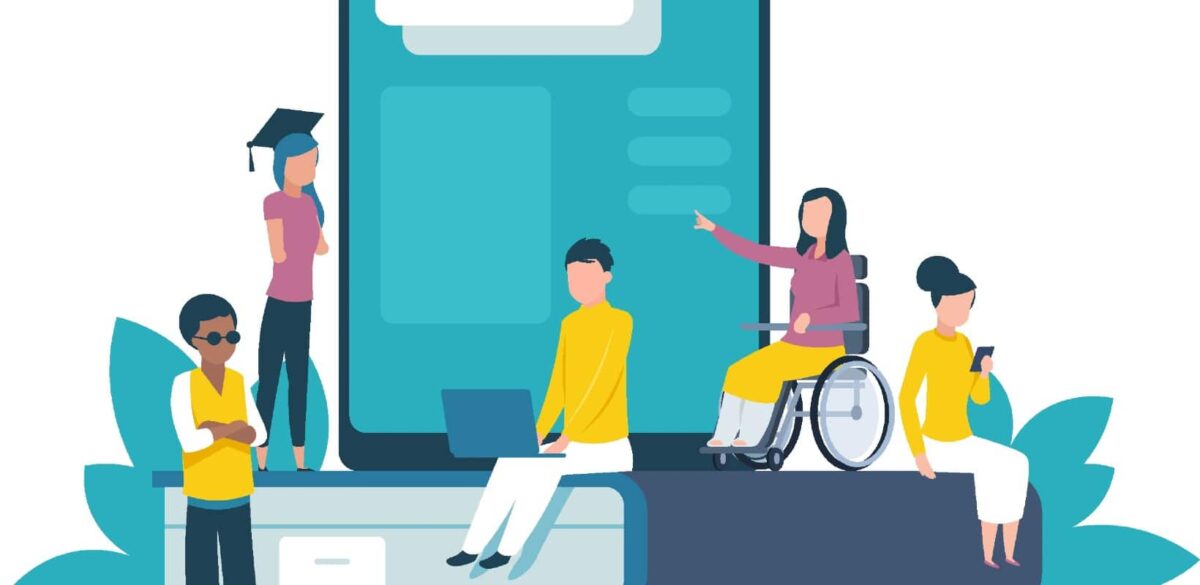
Web accessibility is essential. But so many organizations don’t make their websites, apps, and digital services available to everyone. And things are getting worse. Sixty percent of disabled internet users feel the accessibility of web content has declined over the last year.[1]
But there’s still hope. Web inaccessibility is no longer a design flaw but against government recommendations. Introducing Web Content Accessibility Guidelines (WCAG) 2.1, developed in co-operation with disabled individuals and non-profits around the world.
While there’s no legal requirement to implement WCAG 2.1 in the United States (apart from federal government agencies and their contractors), it’s become the new accessibility standard for the internet. Responsible organizations should adhere to this standard and make the internet a much better place for everyone.
Web Accessibility: What You Need to Know About WCAG 2.1
WCAG 2.1 includes internationally recognized guidelines for improving internet accessibility. These guidelines explain how organizations like yours can make websites, apps, and digital services more accessible for people with vision, hearing, and mobility-related disabilities.
WCAG 2.1 says the internet should be:
- Perceivable
- Operable
- Understandable
- Robust
But there’s more to it than that. WCAG 2.1 guidelines talk about the navigation, layout and general accessibility of internet content, urging organizations to implement:
- Alt-text that screen-reading software detects to describe image descriptions on websites[2]
- A contrast ratio of at least 4.5:1
- Simple spacing
- Consistent navigation
- Keyboard navigation
- Accessible content for all file types, including PDFs and other digital file formats.[3]
LET’S CHAT
What Is WCAG 2.1 AAA?
There are different levels of WCAG 2.1 compliance:
- Level A: Minimal compliance
- Level AA: Acceptable compliance
- Level AAA: Optimal compliance
Each of these levels has specific criteria. Achieving Level AAA compliance means you have made your website available to the maximum number of users. It proves to the world that you are a responsible, ethical, inclusive organization. And that can only be a good thing.
Why Is WCAG 2.1 Important for Web Accessibility?
While federal agencies and their contractors need to adhere to WCAG 2.1 (as per Section 508 of the Rehabilitation Act),[4] organizations like yours should comply with the guidelines because:
Your Content Should Be Accessible to All
Your website should be accessible to people with and without disabilities, as well as everyone else in between. Not being able to access internet services can be frustrating and demoralizing. Making a few changes to your design, layout, and content could positively impact someone’s life.
You Could Increase Donations
If you work for a nonprofit or another organization that accepts donations, making your website more accessible opens your audience to even more people, which can help boost your impact on fundraising.
You Could End Up in Court
You could face civil proceedings for not making your website accessible to people with disabilities. In 2008, Target paid $6 million in damages after the National Federation of the Blind accused them of discriminating against visually impaired people.[5] The suit claimed Target made it difficult for blind customers to use its website, with a lack of features such as alt-text.
Final Word
Web accessibility has many benefits for people with disabilities and your organization. You can make your content available to more people and achieve your fundraising, marketing, and awareness goals. Complying with WCAG 2.1 guidelines — and achieving Level AAA compliance — provides a better experience for everyone.
Further reading and resources: